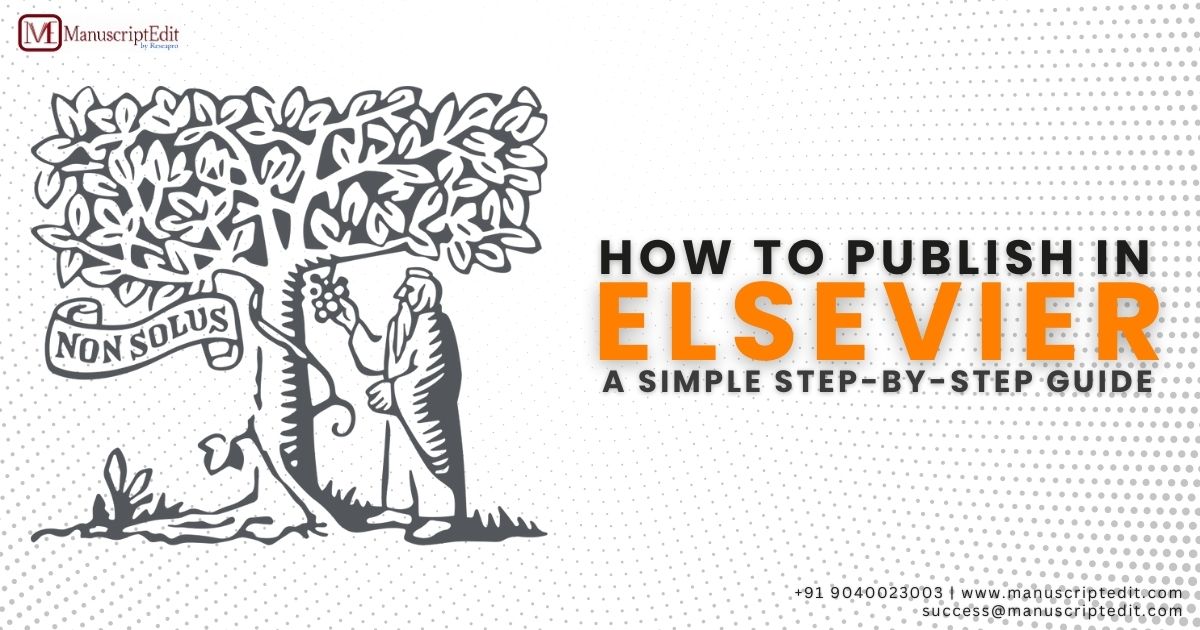|
Getting your Trinity Audio player ready...
|

Publishing your research through Elsevier journals can enhance your career and share your work with the world. However, for many, the process can be challenging. Don’t worry! We’ve simplified it into manageable steps so you can focus on what’s most important to you—your research. Let’s get started!
Table of Contents
Why Publish with Elsevier?
Before we dive into the steps, let’s just address why Elsevier is such a vital platform for publishing your research:
Respected Name: Elsevier is a widely regarded publisher in the academic community. Universities, institutions, and researchers rely on Elsevier journals for peer-reviewed research publications.
Large Readership: Elsevier journals are accessed by thousands of researchers worldwide. Your research has the potential to be read by many and have a global impact.
Free or Paid Options: You can publish under open access (where anyone can read your paper for free) or under the conventional publishing model (where access can be behind a paywall). Open access can be paid for with a publication fee, but your work will be freely accessible.
Step 1: Select the Optimum Journal
The first step is choosing the right journal for your research. This is crucial, as the journal should align with your research topic and scope. To make this easier, Elsevier offers a JournalFinder tool that can help you find the best fit.
Here’s how it works:
- Visit Elsevier’s JournalFinder.
- Enter your article’s title or abstract.
- The tool will recommend journals that are most relevant to your research.
This instrument eliminates the guesswork of choosing a journal. You send your work to a journal that fits your discipline and gives you the best possible chance of acceptance.
Step 2: Write Your Paper
After you’ve chosen a journal, it’s time to write your paper. Before you start, be sure to read the journal’s Author Guidelines carefully—these guidelines can be found on the journal’s website and will give you information on how to organize and format your paper.
Here’s a brief checklist for your paper:
- Structure: Most research papers have a straightforward structure, such as a Title, Abstract, Introduction, Methods, Results, and Conclusion.
- Format: Follow the journal’s guidelines for the right font size, margins, and citation style (e.g., APA or MLA).
- No Plagiarism: Always scan your paper for plagiarism using free software such as Grammarly or Turnitin to make it 100% original.
- Pro Tip: Have a colleague or friend review your paper prior to submission. A fresh pair of eyes can spot mistakes and enhance the clarity of your writing.
Step 3: Submit Your Paper
When your paper is complete, it’s time to submit! Signing up for an Elsevier submission portal account is easy (similar to signing up for an email account).
Here’s how you do it:
- Upload your manuscript: Your paper, cover letter, and supporting files.
- Cover Letter: Attach a brief letter explaining why your research matters and why you’ve submitted it to this journal.
- Confirmation: After submitting, you’ll receive an email confirming your paper has been successfully submitted. You’ll also receive an acknowledgment that it’s being reviewed.
Step 4: Peer Review (The Waiting Game)
This is the stage where patience is key. Once your paper is submitted, it will go through peer review, where experts in your field evaluate the quality of your research.
There are a few possible outcomes from peer review:
- Accepted: The optimal situation, though not often achieved. If your paper is accepted, congratulations!
- Revise: This is more frequent than acceptance. Reviewers will ask you to revise or make suggestions for improvement. Don’t get discouraged; just make the required changes and resubmit.
- Rejected: It happens to the best of us! If your paper is rejected, don’t lose hope. You can try submitting it to another journal—just be sure to correct any problems mentioned by the reviewers.
How to react to feedback:
- Thank the reviewers for their input.
- Carefully respond to the problems they mentioned.
- Resubmit the paper with a letter explaining the revisions you made.
Step 5: After Acceptance
When your paper is accepted, it’s time to celebrate! But the work isn’t over yet—there are still a few important things to do.
- Share Your Work: Now that your article is out, share it! Post it on Twitter or LinkedIn, or email it to others. Make the world aware of your work.
- Track Your Impact: Track views and citations of your article with tools such as Google Scholar. This will help you understand how well your study is doing.
- Download Our Free Checklist: To enhance your paper’s impact after publication, ensure that you go through the Post-Publication Checklist.
FAQs
Q: How long does peer review take?
A: Peer review usually takes 1-3 months. Some journals are quicker, whereas others might take a bit more time.
Q: Is it possible to resubmit to a different journal if rejected?
A: Yes! If your paper is rejected, you can resubmit it to another journal. Just ensure that you revise your paper based on the comments you received.
Q: Is publication free?
A: Depending on the journal, open-access journals can charge a publication fee, whereas conventional journals might not charge a publication fee but may limit access behind a paywall.
Conclusion
Publishing in Elsevier journals needn’t be a daunting experience. By adhering to these straightforward steps—selecting a suitable journal, meeting the submission requirements, reacting to peer review, and marketing your work—you can publish your study and share your work with readers worldwide.
Final Tip: Subscribe to more straightforward guidelines on how to navigate academic publishing!
Additional Support:
Download our “Elsevier Journal Submission Readiness Checklist” using the below link :
https://drive.google.com/file/d/1b4q8DlOTZE99l0d6-KY9hYGoa4xHC0F-/view?usp=drive_link
Watch:

Need an expert? → ManuscriptEdit’s experts can help you choose journals or edit your paper.



